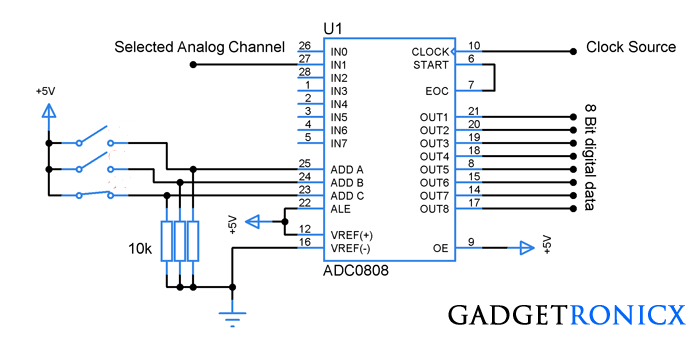
In ADC, this is the third block which is mainly used for quantization. So the value of hold doesn’t change until the next sample. In ADC, HOLD is the second block and it doesn’t have any function because it simply holds the sample amplitude till the next sample is taken. Based on the system requirement, the sampling rate can be fixed. So it can be maintained at a precise rate.

While converting the signal, the sampling frequency plays an essential role. The samples are used in continuous amplitude and hold real value however they are discrete with respect to time. In the sample block, the analog signal can be sampled at an exact interval of time. In ADC, the conversion of the signal from analog to digital can be explained through the above block diagram. Finally, the last block like encoder changes the discrete amplitude into a binary number. The hold sample can be quantized into discrete value through the third block like quantize. The amplitude value of the sample like an analog value can be maintained as well as held within the second block like Hold. The process of ADC can be done like the following.įirst, the analog signal is applied to the first block namely a sample wherever it can be sampled at an exact sampling frequency.

The block diagram of ADC is shown below which includes sample, hold, quantize, and encoder. Classification of ADCs based on factors like performance, bit rates, power, cost, etc. Dynamic characteristics of the high-performance ADCs are improved measurement repeatability, low power consumption, precise throughput, high linearity, excellent Signal-to-Noise Ratio (SNR), and so on.Ī variety of applications of the ADCs are measurement and control systems, industrial instrumentation, communication systems, and all other sensory-based systems. With the invention of a wide variety of ADC integrated circuits (IC’s), data acquisition from various sensors becomes more accurate and faster. One of the major benefits of ADC converter is the high data acquisition rate even at multiplexed inputs.


 0 kommentar(er)
0 kommentar(er)
